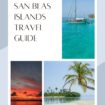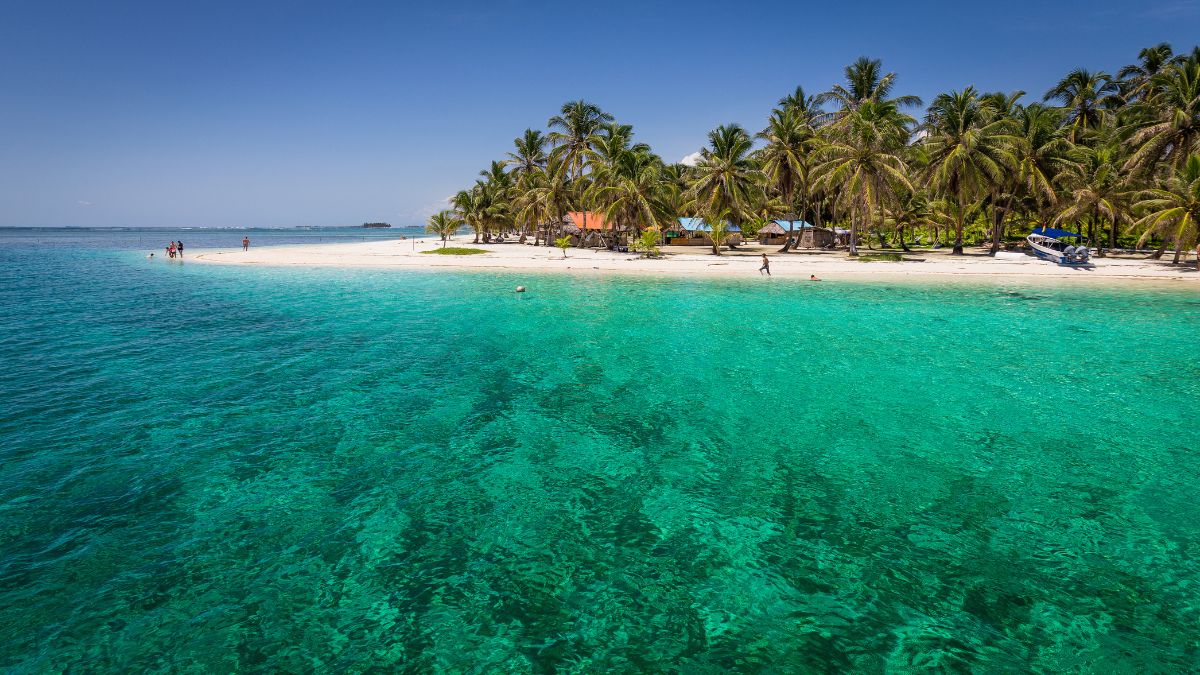
Go World Travel is reader-supported and may earn a commission from purchases made through links in this piece.
The Jamaican family that had just arrived on the island, asked him, “Ye maan, could you put on some music?”
Riba, the manager of this idyllic Yanis Island, replied with a zen expression, “Why do you need music when you have the sounds of the ocean?”
That sums up the setting for the San Blas archipelago and its Guna Yala people.
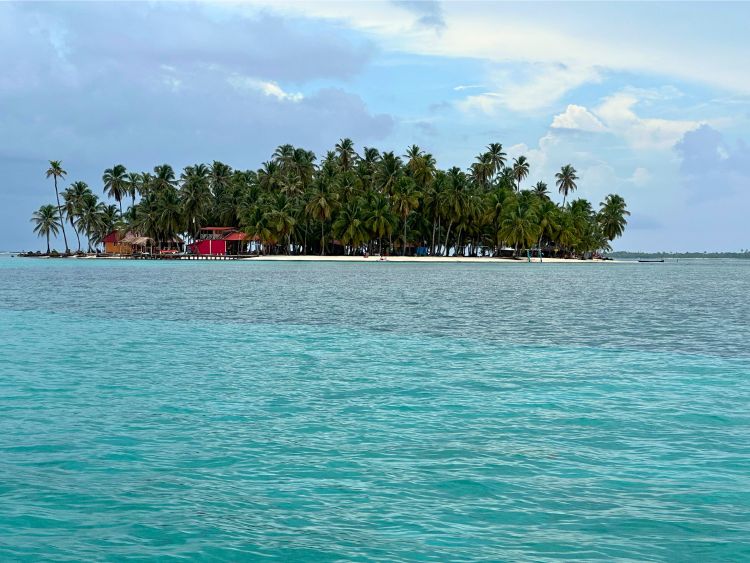
A Little About the San Blas Islands
San Blas is an autonomous territory of Panama, inhabited by the Guna indigenous tribe. Located on the Atlantic coast of the country, these 350 tiny islands are roughly four hours from Panama City by road and a boat ride. They are one of the eight indigenous tribes of Panama.
Best Tips & Tools to Plan Your Trip
Riba tells me that only about 50 of these islands are inhabited. Yanis island is one of them. The bigger island we passed on our ride to Yanis is called the Village.
It is home to about five hundred Guna families. The remainder of the total 7,000 Gunas are scattered around other Islands. Few families live on each tiny island.
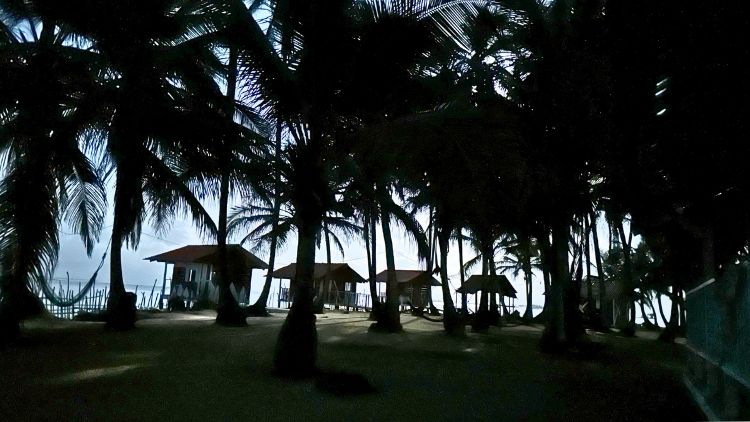
A Communal Living Experience
Riba and his team manage a dozen or so tourists that come to this island each day. Dormitory-style rooms for about 20 guests with shared bathrooms and a common open dining area with a kitchen are on one side of the island.
How big is the island? It is so tiny that you could walk around the island in under 500 steps. The two cheerful Belgian girls counted, and informed me, that the island had 198 coconut trees. Why were they counting trees, one may wonder? Well, there is not much to do on the island.
There is no electricity or running water in the rooms. There is some solar and brief use of generators to light the essential areas. You get three delicious but simple meals served with fresh catch from the sea every day.
The only items you could buy are bottled water, beer, and fresh coconut water, two dollars each. Everything else you have to bring with you which is limited to what you could fit in a small backpack.
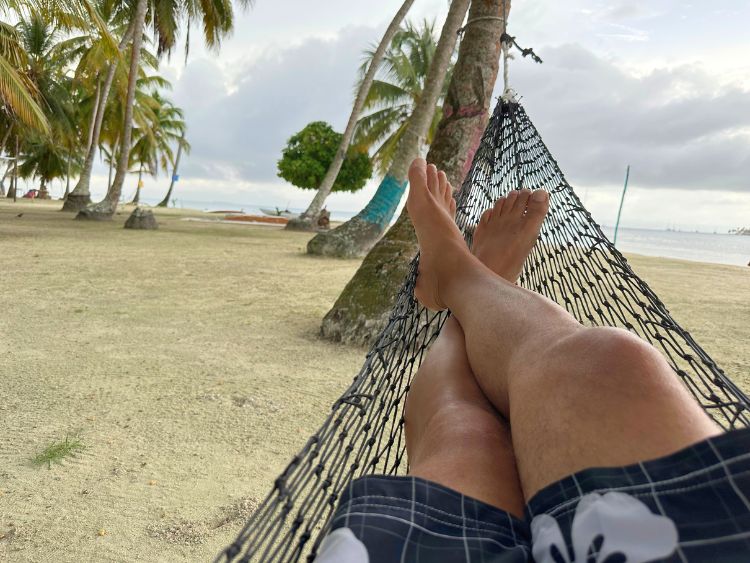
An Underrated Paradise
But the island of San Blas is paradise. White sandy beaches, palm trees, clear turquoise water, coral reef and the sea bustling with life, surrounds you. A few other islands dot the horizon and the distant San Blas hills crowned by the lingering clouds just mesmerize you.
It rains every day during this season but not so much to hamper your spirits. A quick shower and then it clears. You swim, snorkel, kayak, lounge in a hammock, or simply walk on the beach. There are few boat tours available to nearby places.
In the evening you can sit around the dinner table and chat with fellow travelers or play some board games or cards. There is no Wi-Fi either and a weak network signal. Also, you can’t charge your phones easily. That explains why the young Jamaicans were not quite thrilled to be there.
A Zen Way of Life
Riba tells me that he started this business in 2019 just before Covid.
“Bad timing,” I said.
Riba looks at me with his zen expression again and says, “Why would there be a problem?” Then pointing at the ocean surrounding us, continues, “I have my supermarket right here for all I need.”
Read More: Dare to Disconnect in Bocas Del Toro, Panama
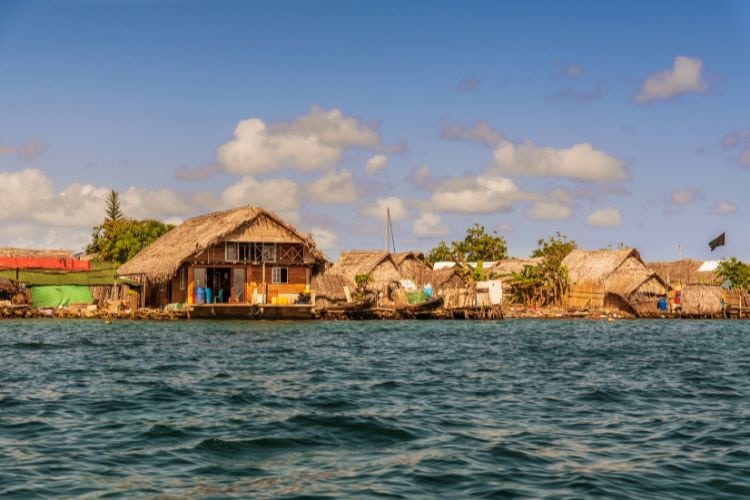
The Indigenous Guna People in the San Blas Islands
A Guna family resides on the other side of this tiny island. That gave me a chance to observe their lifestyle. A grandmother sits outside and knits or weaves all day. Men go fishing early in the morning. And two young girls walk around the island a few times a day to collect fallen coconuts or are busy with chores around their huts. They communicate in the Guna language but also speak Spanish.
All other basic supplies are brought from the mainland. These days most have a small motorboat, but wooden canoes are still around, providing a glimpse of what their way of life would have been just a few decades back. I wondered why the Guna people do not live on their territory that is on the mainland.
Riba with his typical expression, said, “Guna people are fishermen, we don’t prefer the mountains.”
Getting to Know Fellow Adventurers
During my three days on the island, I met quite a few interesting fellow adventurers. There were mostly younger budget backpackers from around the world but there were also a few families.
My journey started from Panama City very early in the morning. First, I met these three youngsters from Israel with whom I shared the transport SUV. Then we picked up a couple of Dutch backpackers from the youth hostel. Six people per vehicle. That was one reason why no one could bring more than a small bag to the islands. After an hour and a half of travel towards the northeast via highway, the vehicle turned towards the mountains. It was a winding narrow road with roller-coaster twists and turns.
Halfway into the hills, we reach the Guna territory checkpoint, where our passports were checked. There for the first time, you notice two flags that mark Guna land. On the top a red, yellow, and green Guna flag and second, a yellow and red flag with a swastika, below it. That clearly had spooked my fellow Israeli passenger.
Yanis Island
When we reached the Guna port, we parted ways as we were heading to different islands. I boarded the small boat for Yanis Island along with two other backpackers. I asked Riba about the flags during my stay. He said the second flag with Swastika was Guna’s revolutionary flag from when they resisted the Panamanians from taking over their way of life.
The couple in their mid-thirties, that boarded with me on the boat to Yanis island were going to be there for three days as well. They introduced themselves later as Sam, an ex-navy officer, and Jaz, who was the quieter one with long hair. They were the nicest couple and mostly stayed to themselves but were very helpful. Sam told several interesting stories about Navy life.
On the island, we joined two girls on vacation from California. They were already there for four days and despite doing everything there was to do there, they were still enjoying the place.
The night was the most difficult time on the island. The breeze had died down. In that sweltering heat with no air conditioning or even fans, it was impossible to sleep. Finally, I dozed off around two in the morning when it cooled a bit.
Awaiting Another Batch of Explorers
The next morning after that group left, it was just me with Sam and Jaz on the island, until the next batch arrived around noon. That idyllic morning suddenly clouds gathered and there was a heavy downpour with thunder and lightning for about an hour. I seized the opportunity to soak myself in the cool downpour from the skies. The toilets, while basic were kept relatively clean.
The next group arrived around noon. The Jamaican family consisted of two sisters in their twenties, their brother, and their mother. The Jamaican youngsters were clearly not happy to have no music or Wi-Fi. The mother said that her grandfather had worked on the canal as a young man and she remembers the stories of his hardships that were passed down to her, from when she was young.
There were also two cheerful Belgian backpackers and a family from Montreal. And then there was this interesting young Dutch student who was backpacking for three months straight. He came to New York to take a six-week course. Then, he hopped on to a cheap flight he could find to Guatemala. He traveled from Guatemala, to Belize, to El Salvador, to Nicaragua, to Costa Rica, until he finally arrived in Panama for his last week before he returns to the Netherlands.
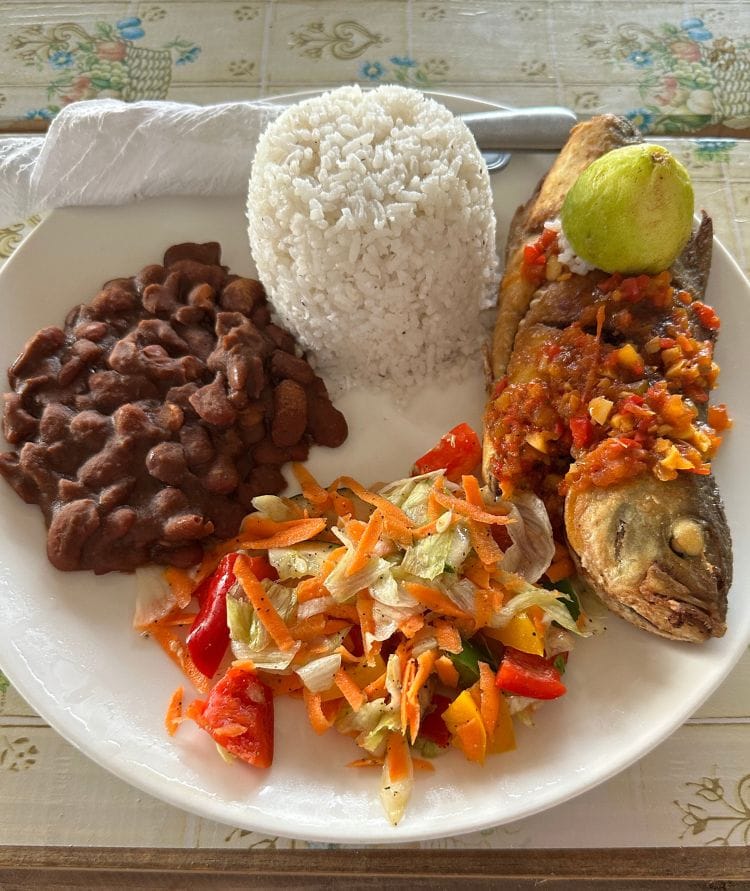
An Affordable Adventure
This San Blas Island stay for four days was a luxury for him. He had a separate room and three good meals a day. That and the transport to and from the city just cost him around sixty dollars a day. Yes, the San Blas trip is very affordable for anyone.
That afternoon I went with Sam and Jaz on a boat tour to snorkel around a sunken ship and then to waddle around a few feet of water in a natural pool in the middle of the ocean. They were helpful to me as I can barely swim. There are many good activities to break the otherwise idyllic monotony of the island.
Read More: Humor: Jaguar Stalking in Panama
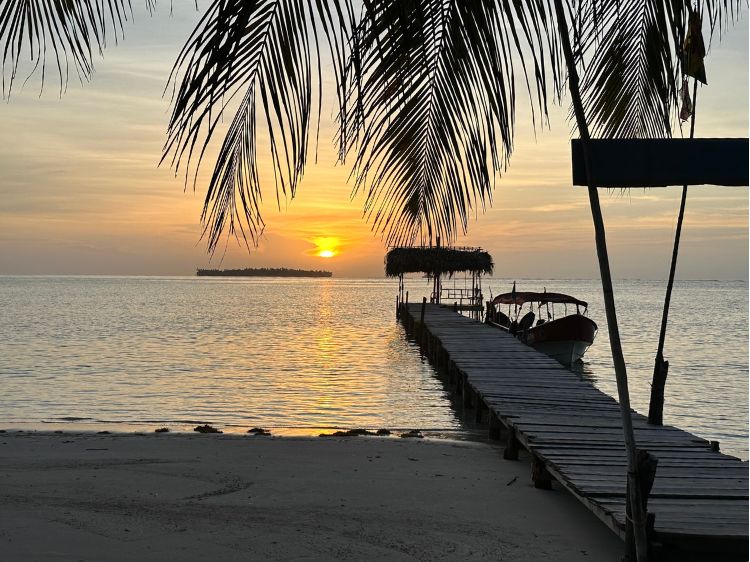
Saying Bye to the Beautiful San Blas Islands
The next morning by eight, I was ready to head back. Riba came with us in the boat to drop us to the Guna port where my return vehicle was waiting. I said goodbye to Riba and thanked him for his hospitality. He in return, with his zen expression, just kindly patted on my shoulder, which said it all. And then he moved on to pick up his next guests to the island.
As I left behind the Guna Yala territory, I thought to myself, how would I rate this experience? It had many positives but also lacked the obvious comforts that I expect. I concluded that it was definitely worth it to be out of my comfort zone for a few days, meet interesting people from around the world and learn about the indigenous people and their lives. Guna people are the gentlest, kindest people who are trying to maintain their way of life as the world moves past them at hyper speed.
Author Bio: I enjoy traveling around the world and writing about interesting places and people that I come across. As a retired professional, I find that is the best way to keep me young and creative.
- Travel Guide to Colorado - April 26, 2024
- Travel Guide to Croatia - April 26, 2024
- Top 10 Things to Do in Ireland - April 25, 2024

